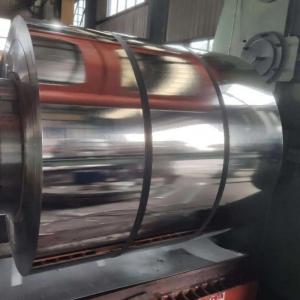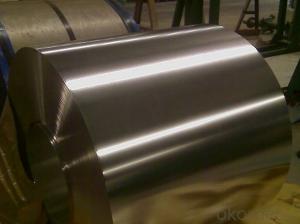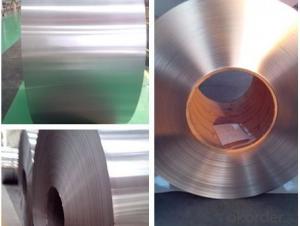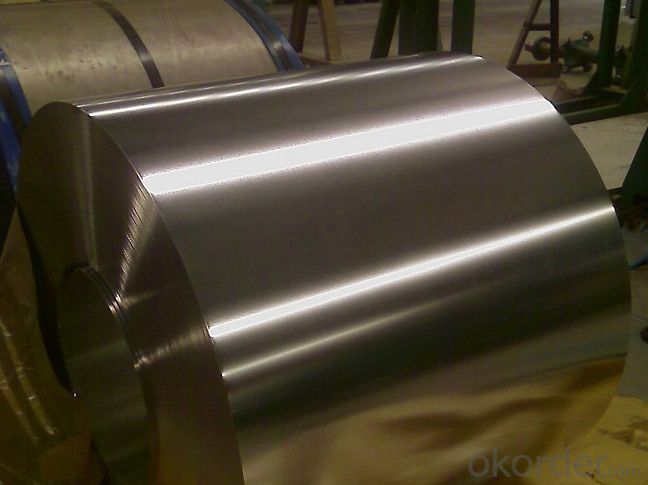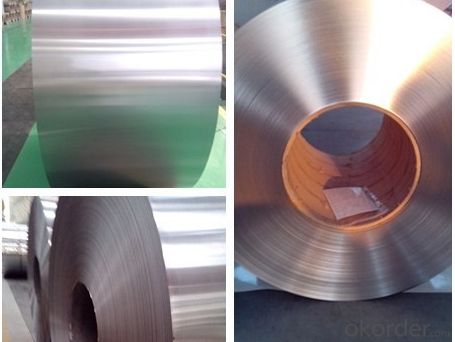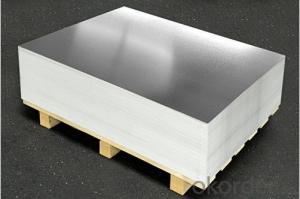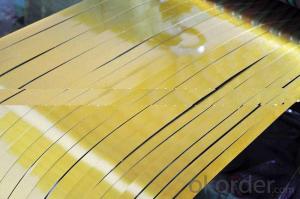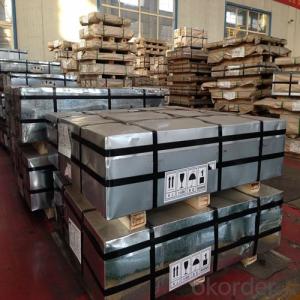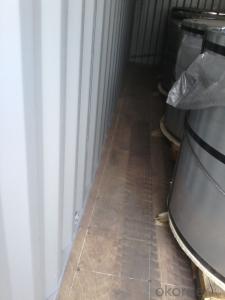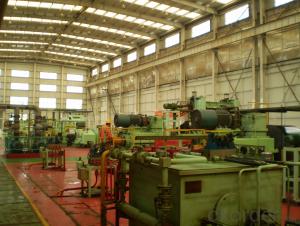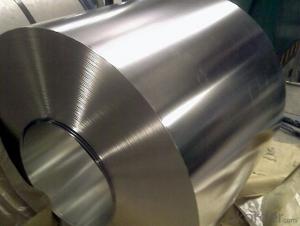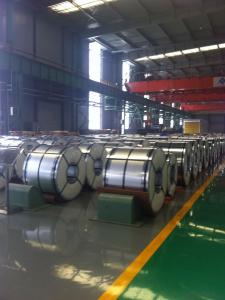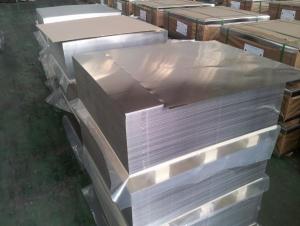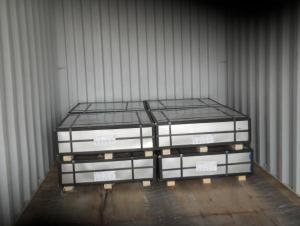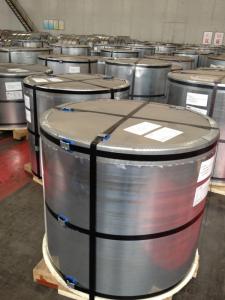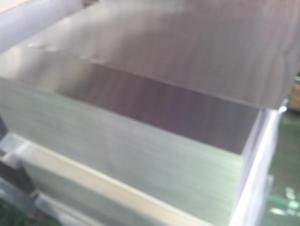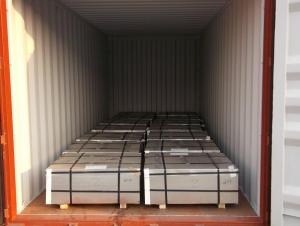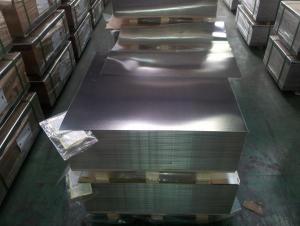Prime electrolytic quality tinplate coil/secondary electrolytic tinplate ETP coil
- Loading Port:
- Tai Chung
- Payment Terms:
- TT or LC
- Min Order Qty:
- 20 m.t.
- Supply Capability:
- 20000 m.t./month
OKorder Service Pledge
OKorder Financial Service
You Might Also Like
1. Structure of ETP Description
Tinplate is sheet steel covered by a layer of tin, widely used in packaging industry and other field.
Tianjin Kunry supply reasonable prices of tinplate with better quality and faster delivery. We hope to conclude business with more customers at home and abroad
2. Main Features of the ETP
Our company has been in the industry for more than 10 years.We have been trusted by domestic owned companies,,as well as international distributors and renowned brands,such as Haier,Kia and Beijing Hyundai etc.We put quality as lifeline.We never manufacture or sale defected products,or lowering our price at the cost of products quality.
3.Prime Electrolytic Tinplate,Tinplate China Images

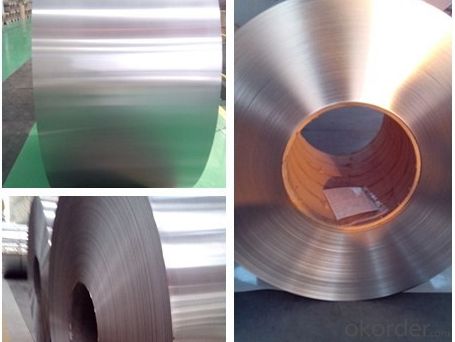
4.Prime Electrolytic Tinplate,Tinplate China Specification
Product name | Prime T3 Tinplate in sheets |
Steel Type | SPCC, MR |
Temper(BA&CA) | T1~T5 |
Coating for the Prime T3 Tinplate in sheets | 1.1~11.2g/m2 |
Thickness and tolerance | 0.15~0.50mm(Tolerance: _+0.01 mm) |
Width & tolerance | 300~1000mm (Tolerance: 0~3mm) |
Cut length & tolerance | 450~``50mm (Tolerance: 0~3mm ) |
Coil inside diameter | 420/508mm |
Coil Weight | Prime T3 Tinplate in sheets weight 3~10 MT |
Passivation | 311 |
Oiling | DOS |
Surface Finish | Bright, Stone, Silver, Matte |
Packaging | Prime T3 Tinplate in sheets with Seaworthy Standard with wooden pallet |
Standards Available | GB/T2520, JIS G3303, ASTM A623M & EN10202 |
- Q: What's the latest price for tinplate?
- Tinplate, 6500 yuan to 7500 yuan / ton
- Q: How is tinplate coated with organic materials for specific applications?
- Tinplate can be coated with organic materials for specific applications through a process called organic coating or lacquering. In this process, a thin layer of organic material, such as polymer or lacquer, is applied onto the surface of the tinplate. This coating provides various benefits like corrosion resistance, improved aesthetic appearance, and enhanced durability. The organic coating can be applied through methods like roll coating, spray coating, or electrostatic deposition, depending on the specific requirements of the application.
- Q: Can tinplate be used for chemical packaging?
- Yes, tinplate can be used for chemical packaging. Tinplate is a type of steel coated with a thin layer of tin, which provides a protective barrier against corrosion. It is widely used in the packaging industry, including for chemicals, due to its durability, resistance to corrosion, and ability to maintain product integrity.
- Q: How does tinplate perform in terms of stackability?
- Tinplate performs well in terms of stackability due to its rigid and durable nature. Its flat surface and uniform thickness allow for easy stacking and stability, making it suitable for various storage and transportation applications.
- Q: What is the average lifespan of tinplate products?
- The average lifespan of tinplate products can vary depending on various factors such as the quality of the tin coating, the usage conditions, and proper maintenance. However, on average, tinplate products can last for several years to decades if they are well-maintained and not exposed to extreme conditions or corrosive environments.
- Q: How does tinplate contribute to the protection of musical instruments?
- Tinplate is commonly used in the manufacturing of musical instrument cases and containers due to its durability, corrosion resistance, and ability to provide a protective barrier. It helps safeguard musical instruments from external factors such as moisture, dust, and impacts, ensuring their longevity and preserving their sound quality.
- Q: Can tinplate be used for coinage?
- No, tinplate cannot be used for coinage as it is not a suitable material for making coins.
- Q: What are the different methods of sealing tinplate containers?
- There are several methods of sealing tinplate containers, including double seaming, soldering, welding, and using adhesive or pressure-sensitive seals. Each method offers its own advantages and is chosen based on factors such as the contents of the container, desired level of seal integrity, and production requirements.
- Q: What is the tin plated iron?
- Galvanized iron. Daily necessities with tin. Such as boxes, pipes, etc..Tinplate: tin plated iron. Generally used in food packaging. Canned goods.
- Q: Can tinplate be used for shipping containers?
- Yes, tinplate can be used for shipping containers. Tinplate is a type of steel coated with a thin layer of tin, which provides corrosion resistance and durability. This makes it suitable for shipping containers as it helps protect the container from rust and external damage during transportation and storage.
Send your message to us
Prime electrolytic quality tinplate coil/secondary electrolytic tinplate ETP coil
- Loading Port:
- Tai Chung
- Payment Terms:
- TT or LC
- Min Order Qty:
- 20 m.t.
- Supply Capability:
- 20000 m.t./month
OKorder Service Pledge
OKorder Financial Service
Similar products
Hot products
Hot Searches
Related keywords
